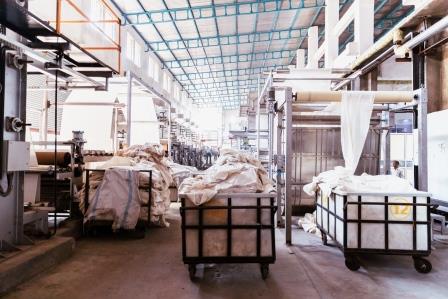The main reason why the corporate sector made bumper profits in the quarter ended September 2020 was the significantly lower spending on inputs compared to the sales. Both, sales and expenses declined sharply during the lockdown quarters of June and September 2020. But, expenses fell more sharply than sales did. This helped the corporate sector record bumper profits.
Purchase of raw materials and finished goods for resale accounts for the bulk of the cost structure of non-finance companies. Traditionally, its share has been well over 50 percent. Therefore, if expenses on account of these grow at a slower pace than the growth in sales, it has a huge impact on the profits. In the past two recessionary quarters when business has shrunk, the fall in expenses on raw materials and finished goods was significantly greater than the fall in the topline. The profits,therefore did not shrink and in fact grew even though the business shrank.
But, how can the growth in expenses on raw materials and purchased finished goods be lower than the growth in sales? This can happen because of one or a combination of more than one of the following three factors a shift in the terms of trade or, by a drawing down of inventories, or through efficiency gains.
A favourable shift in the terms of trade implies that the prices of raw materials and purchased finished goods rise at a slower rate compared to the increase in prices of the corresponding goods sold or, they fall at a faster rate compared to the fall in prices of goods sold.
In times of uncertainty such as the kind faced by the corporate sector during the lockdown, companies would prefer to use the raw materials and purchased finished goods available in their stock and not replenish them till these are drawn down substantially and the uncertainty of the business environment reduces. During the lockdown, the logistics cost of replenishing stocks could have increased and this could be a cost companies would try and avoid. This would directly lead to a fall in raw material and purchased finished goods stock. But, companies would try their best to sell in a difficult market to meet their fixed cost. This positively impacted profits in the September 2020 quarter.
The third factor of efficiency gains usually plays out over the long run. Efficiency gains are obtained by companies engineering structural changes including inventory management to reduce the effective working capital cycle.
We can examine the impact of a shift in terms of trade using the wholesale price indices for manufactured goods on the one hand and, minerals, crude petroleum and gas, fuel and power, and non-food non-mineral primary articles such as fibres and oilseeds which are inputs to manufacturing companies. Prima facie, manufactured companies did gain from favourable terms of trade in the September 2020 quarter. The wholesale price index of manufactured products rose y-o-y by 1.19 percent. However, the index for fuel and power fell 9.49 percent, that for non-food-non-mineral articles fell by 2.41 percent and crude oil and natural gas fell by 17.74 percent. Only the index for minerals rose by 4.99 percent. The minerals index has a weight of only 0.83 percent in the WPI compared to crude petroleum and gas that has a weight of 2.4 percent, non-food articles of 4.12 percent and fuel and power of 13.15 percent. Manufacturing companies had favourable terms of trade even in the June 2020 quarter. Prices of manufactured goods fell by 0.03 percent but those of fuels were down by 17.36 percent, non-food articles by 3.23 percent and crude petroleum and natural gas by 35.59 percent. Only minerals rose 1.40 percent.
Next, we examine the role of draw-down of inventories. A quick way of examining this would be the ratio of raw material costs as a percent of sales. In the present case such a comparison will be partially confounded by the terms-of-trade factor described above. Nevertheless, it may be instructive to see the behaviour of this ratio in the past two quarters.
The raw materials to sales ratio dropped from over 50 percent historically, to 44 in the June 2020 quarter. This is a very sharp fall and may not be explicable entirely by the change in terms of trade. It implies that companies spent less on raw materials than they earned through sales. This is possible through drawing down of inventories. But, inventories are not infinite. At some time they have to be replenished.
In the September 2020 quarter, the raw material to sales ratio climbed to 50 percent. This is still lower than historical values which were higher than 50 percent. Companies were still drawing upon inventories. But, this was much lesser than it was in the June 2020 quarter.
If, as is evident from the above, companies have been drawing down inventories for two consecutive quarters, then the need to replenish in the coming quarters will be correspondingly high. This could mean that sales growth would be lower than growth in expenses on raw materials and purchased finished goods.
But, it may not be wise to expect the replenishing of stocks to be an arithmetical phenomenon. Business managers do not waste a crisis easily. The lockdown is likely to have taught them lessons to manage with lower stocks. We say this with some confidence because historically, companies have been systematically reducing the ratio of raw materials and purchased finished goods to sales. A structural change is underway. The ratio has come down from 60-65 percent till 2014 to 55-58 percent since then. It is possible that this ratio will structurally fall further as companies worry about the increased risks and uncertainties of the new post-pandemic world.
First published in Times of India.










